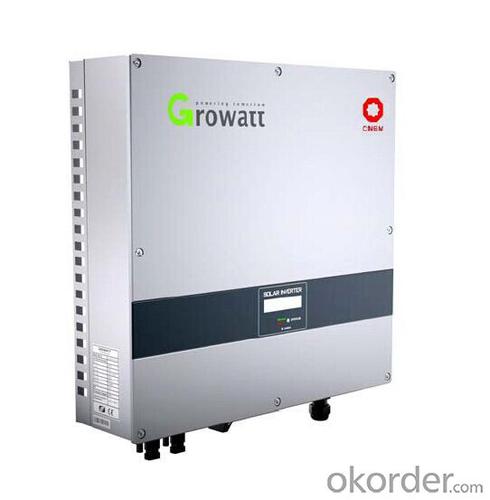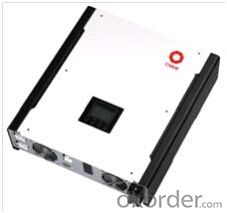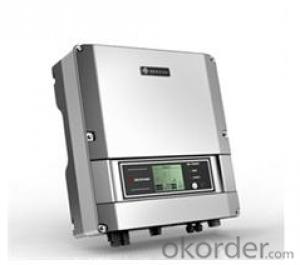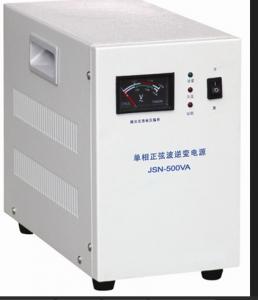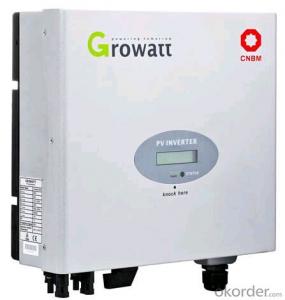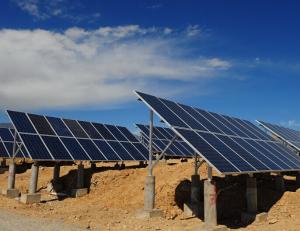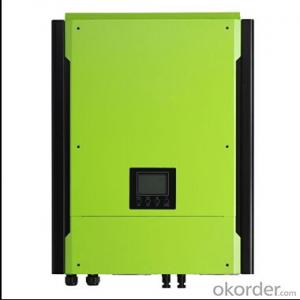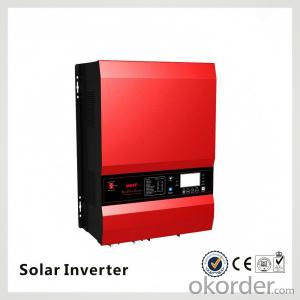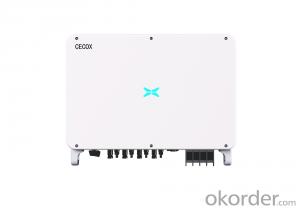300kw Solar Inverter 2kw On-grid Inverter with Energy Storage 1kw/2kw/3kw Hybrid Inverter
- Loading Port:
- China main port
- Payment Terms:
- TT OR LC
- Min Order Qty:
- 1000 watt
- Supply Capability:
- 100000 watt/month
OKorder Service Pledge
OKorder Financial Service
You Might Also Like
Introduction
On-grid Inverter with Energy Storage 2kW/3kW hybrid inverter
Pure sine wave output
Microprocessor controlled to guarantee stable charging system
Multiple operations: Grid tie, Off grid, and grid tie with backup
Built-in MPPT solar charger
LCD display panel for comprehensive information
Multiple communication
Green substitution for generators
User adjustable charging current up to 25A
Features
Feed-in is not only choice
In comparison with conventional grid-tie inverter, CNBM-H is able to not only feed-in power to
grid but also store solar power to battery for future usage and directly power to the loads.
Save money by discharging battery for self-consumption first
CNBM-H can save money by using battery energy first when PV energy is low. Until battery
energy is low, CNBM will extract AC power from the grid.
Power backup when AC failed
CNBM-H can operate as an off-grid inverter to provide continuous power even without the grid.
It’s perfect power solution for remote regions or temporary AC power source such as camping or flea market.
Images
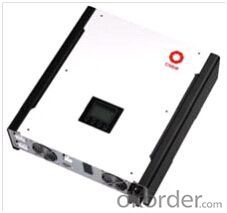

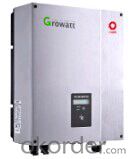

Sepecification
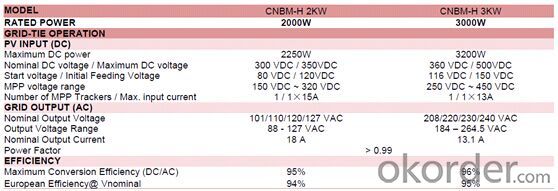
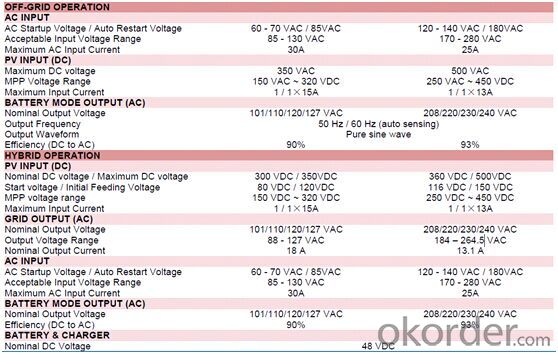
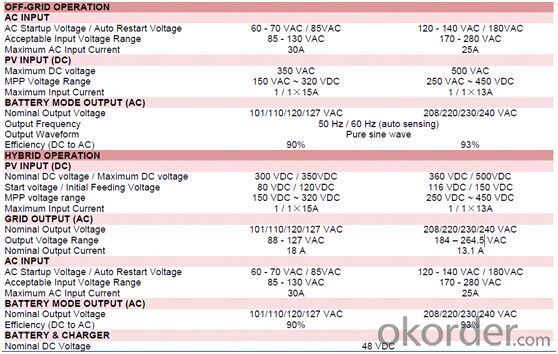
FAQ
Q1: How to choose a right inverter?
A1:Tell us your demand, then our sales will recommend a suitable inverter to you.
Q2: What's the different between inverter and solar inverter?
A2: Inverter is only accept AC input, but solar inverter not only accept AC input but also can connect with solar panel to accept PV input, it more save power.
Q3: How about the delivery time?
A3: 7 days for sample; 25 days for bulk order.
Q4: What is the warranty of inverter?
A4: 5/10 years warranty on CNBM-Solar product.
Q5: How to solve the technical problem?
A5: 24 hours after-service consultancy just for you and to make your problem to solve easily.
- Q: How does a solar inverter handle power surges or fluctuations?
- A solar inverter handles power surges or fluctuations by employing various protective mechanisms. It typically incorporates surge protection devices, such as varistors or metal-oxide varistors (MOVs), to absorb and redirect high voltage spikes caused by power surges. Additionally, inverter designs may include capacitors that help smooth out voltage fluctuations and stabilize the power output. These protective features ensure that the solar inverter can effectively handle power surges or fluctuations, safeguarding the system's integrity and preventing any damage to connected devices.
- Q: Can a solar inverter be used with a solar-powered lighting system?
- Yes, a solar inverter can be used with a solar-powered lighting system. A solar inverter is responsible for converting the direct current (DC) energy generated by the solar panels into usable alternating current (AC) electricity. This AC electricity can then be utilized by the lighting system for illumination.
- Q: Can a solar inverter be used in a ground-mounted solar tracking system?
- Yes, a solar inverter can be used in a ground-mounted solar tracking system. The solar inverter is responsible for converting the direct current (DC) generated by the solar panels into alternating current (AC) that can be used to power electrical devices or be fed back into the grid. Whether the solar panels are fixed or mounted on a tracking system, the inverter's function remains the same.
- Q: What is the role of a reactive power controller in a solar inverter?
- The role of a reactive power controller in a solar inverter is to regulate and maintain the flow of reactive power to ensure a balanced and stable electrical grid. By dynamically controlling the reactive power output, the controller helps to improve power factor, minimize voltage fluctuations, and enhance the overall system performance and efficiency of the solar inverter.
- Q: How do you calculate the power output of a solar inverter?
- To calculate the power output of a solar inverter, you need to multiply the input voltage by the input current. This will give you the input power. Then, multiply the efficiency of the inverter by the input power to get the output power.
- Q: What is the importance of voltage and frequency control in a solar inverter?
- The importance of voltage and frequency control in a solar inverter is paramount as it ensures the efficient and reliable operation of the solar power system. Voltage control helps maintain the appropriate voltage levels, enabling the safe and optimal utilization of the generated solar energy. It ensures compatibility with the electrical grid and protects connected appliances and devices from potential damage. Similarly, frequency control ensures that the output power from the solar inverter matches the frequency of the grid, enabling seamless integration and preventing disruptions in the electrical supply. Both voltage and frequency control play a crucial role in maximizing the performance and stability of the solar inverter system.
- Q: What is the role of a solar inverter in reactive power compensation during grid disturbances?
- The role of a solar inverter in reactive power compensation during grid disturbances is to regulate and manage the reactive power flow between the solar panel system and the grid. During grid disturbances, such as voltage fluctuations or power factor variations, the solar inverter helps maintain a stable and balanced flow of reactive power, ensuring efficient and reliable operation of the solar panel system while minimizing the impact on the grid.
- Q: What are the key differences between a central inverter and a string inverter?
- The key differences between a central inverter and a string inverter lie in their design and functionality. A central inverter is a single large inverter that is typically installed at a central location in the solar power system. It receives the DC power generated by multiple solar panels connected in series, and then converts it into AC power for use in the electrical grid. Central inverters are more suitable for large-scale solar installations as they can handle higher power outputs. On the other hand, a string inverter is a smaller inverter that is installed close to the solar panels. It works by converting the DC power generated by a string of panels, typically 8 to 12, into AC power. String inverters are commonly used in residential or smaller commercial solar installations. One notable difference is the location of the inverters. Central inverters are typically installed in a dedicated room or enclosure, away from the solar panels, whereas string inverters are generally mounted either on the wall or directly on solar panel mounting racks. Another difference is the impact of shading or panel malfunction. In a central inverter system, if one panel is shaded or malfunctions, it affects the output of the entire string of panels. In contrast, with a string inverter system, the impact is limited to only the affected string, allowing other strings to continue generating power efficiently. Additionally, string inverters offer better monitoring capabilities as they can provide real-time data for each individual string of panels, allowing for easier troubleshooting and maintenance. Central inverters, on the other hand, provide a single output value for the entire solar array. Overall, the choice between a central inverter and a string inverter depends on the scale of the solar installation, the available space, and the specific requirements of the project.
- Q: What is the role of a solar inverter in preventing overloading?
- The role of a solar inverter in preventing overloading is to monitor the flow of electricity from the solar panels and regulate the amount of power being generated and fed into the electrical grid. It ensures that the solar system operates within its capacity and prevents excessive power generation that could lead to overloading and potential damage to the system or the electrical grid.
- Q: What is the role of a power factor controller in a solar inverter?
- The role of a power factor controller in a solar inverter is to regulate and optimize the power factor of the inverter's output. It ensures that the power drawn from the grid or generated by the solar panels is in sync with the voltage and current, minimizing reactive power and maximizing the efficiency of the system. By maintaining a high power factor, the power factor controller helps reduce energy losses, improve overall system performance, and comply with grid regulations.
Send your message to us
300kw Solar Inverter 2kw On-grid Inverter with Energy Storage 1kw/2kw/3kw Hybrid Inverter
- Loading Port:
- China main port
- Payment Terms:
- TT OR LC
- Min Order Qty:
- 1000 watt
- Supply Capability:
- 100000 watt/month
OKorder Service Pledge
OKorder Financial Service
Similar products
Hot products
Hot Searches
Related keywords


